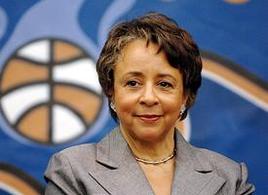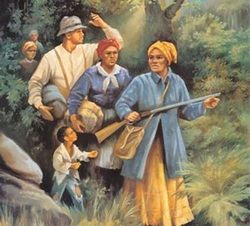 By Yoon Joung Lee A co-founder of Black Entertainment Television (BET) and the nation’s first Black female billionaire, Sheila Crump Johnson, was born in 1949 in Chicago, IL, as a daughter of a neurosurgeon. When she was a freshman at the University of Illinois, she met her future husband Robert Johnson who was her mentor during the orientation for new comers. They soon fell in love with each other and got married two years later in 1968. They were married for 33 years until they divorced in 2002 and have two children, Paige and Brett. Together, they founded the entertainment network BET and expanded into a broadcasting empire. When the couple later sold the business to a cable giant Viacom for 3 billion in 1997, they equally split $1.5 billion in proceeds of the sale. After their divorce, Johnson became the first African-American female billionaire in the States and Forbes estimates her wealth at $750 million. Although many people recognize her as the former wife of BET chief executive Robert L. Johnson, she herself has made numerous accomplishments on her own other than her accomplishments during the marriage. Sheila Johnson is not only a visionary businesswoman and an entrepreneur but also she is a philanthropist, photographer, designer, violinist, and filmmaker. Though she is mainly known as the first African-American woman, to own in co partnership, three professional sports franchises: the Washington Capitals, Washington Wizards, and the Washington Mystics. She is also a supporter of the UNCF, Parsons School of Design (where she serves as Chair of the Board), the State University of New York at Morrisville, and the Hill School in Middleburg. As an accomplished photographer, her photos have been displayed in various restaurants and galleries in Virginia. As a designer, she creates her own line of linens manufactured in Italy. As a violinist, she taught music at Sidwell Friends School in D.C. and published a music textbook for student violinists. She also served as an executive film producer. Two of her films, Kicking It and A Powerful Noise, were premiered in 2008 each at Sundance Film Festival and Tribeca Film Festival. Although Johnson’s official title at BET was executive vice president for corporate affairs, it was obvious that BET and Johnson’s fortune could not be established without her work. With an equal partnership, she fully devoted her time and effort to the company while she was a best friend and the biggest supporter for her husband as well. When her dissatisfaction on her role and the couple’s professional and personal differences escalated, her husband fired her and they ended up filing for divorce in 2002. Their divorce ultimately opened up Johnson a new door in her career. In an effort to get over this painful experience in her life, she settled in Middleburg, Virginia: horse-farm country with a majority white population. There, she enjoyed the quiet and peaceful countryside. The place was also perfect for her daughter, Paige, who loves riding horses. While she was resting at the farm, she decided to launch the hospitality business to entertain people in a different way. In 2005, she founded the company called Salamander Hospitality, LLC. Under her leadership, Salamander Hospitality includes the Woodlands Resorts & Inn in Summerville, South Carolina, a 900 acre of the Innisbrook Resort and 72 hole of PGA tour Golf Club in Palm Harbor, Florida, and the Salamander Resort & Spa in Middleburg, Virginia. In the same year of 2005, she remarried Arlington County Circuit Court Chief Juge William T. Newman, who presided over her divorce. Her name is on the numerous “firsts” lists in various fields: She was the first African-American female billionaire and she was the first African-American female to launch a luxury hotel business. Despite her accomplishments, Sheila Johnson is a humble and loving woman who has a reputation in the community for being generous and helping others in need. As a mother of two, she will continue to put her effort to have her children receive a high quality education and guidance. As a supervisor of 25 employees in her Salamander Farm, she will continues to be a great leader with passion and vision. She will also continue to exhibit her photographs and play her violin at various fundraising events.  by Yoon Joung Lee During the American Civil War, there was a woman called “Moses” by hundreds of slaves. Harriet Tubman, a runaway slave from Maryland, was born around 1820. She was an abolitionist, Civil War spy, nurse, humanitarian, and Underground Railroad conductor. She was the fifth of nine children. As her parents were slaves, she was naturally born into slavery. She had a harsh childhood and was whipped even though she was very little. When she was 12 years old, she got a serious injury after she was hit on her head by a two-pound iron weight thrown by one of the slave overseers. The incidence was caused initially because Harriet blocked a doorway to protect another slave who attempted to escape. This event brought her narcolepsy which is a sleep disorder that causes excessive sleepiness and frequent daytime sleep attacks. This condition followed her for the rest of her life. She married a free African American man named John Tubman in 1844. In 1849 she decided to run away because she was afraid of being sold or sent to the South after the farm owner of her and her family died. With the help of her white neighbor, Harriet was able to reach Underground Railroad that was a secret network of “safe houses” that helped slaves to move safely from one place to another, and eventually their way to the Canadian border. Despite Harriet’s successful escape to the South, she went back to the South a year later to rescue her sister and her kids. On her second return she saved her brother and two other slaves. When she made the dangerous third trip back to the South to rescue her husband, she found out that he had another wife and she instead came back with other slaves who longed for freedom. After she escaped from slavery, Harriet made total 19 trips to the South to bring slaves to the North where they could gain freedom. As one of the conductors who travels with slaves to escape at Underground Railroad, Harriet had saved approximately 300 slaves from the South, and about 100,000 slaves were able to escape during a 40-year-period with the help of the Underground Railroad. What made her extremely courageous and confident was her belief that God was aiding and equipping her throughout her journey as a "conductor." There were times when she had to be aggressive to lead the slaves out of the slavery. She used to take out a gun and threaten them, saying "Do you want to die here or gain your freedom?" She required obedience from the slaves, and they also knew they could successfully escape only when they followed her guidance. For them, Harriet was known as "Moses" who saved the people of Israel from Egyptian slavery. She was a friend with many influential people of the time. In the mid-1850s, she met a US senator and a former New York State Governor William H. Seward. The couple later provided her with various help, and offered her and her family houses to stay in when she was no longer on the road after the Civil War. She also befriended with abolitionists John Brown, Frederick Douglas, Jermin Louguen and Gerrit Smith, and closely worked with them to fight slavery. While she was guiding a group of African American soldiers in South Carolina after the outbreak of the Civil War, she met her future husband, Nelson Davis who was 10 years younger than Harriet. They got married when she moved to Auburn, New York after the end of the Civil War. They built their house and spent the rest of their lives in Auburn. During the time in Auburn, she continued to passionately work for human rights including womens' and keep in touch with her beloved friends, William and his wife, Frances Seward. Harriet died in 1913 in Auburn, New York, at her age of 93. Her heroic life still inspires many people in the United States. |
Archives
July 2017
Categories
All
|
 RSS Feed
RSS Feed